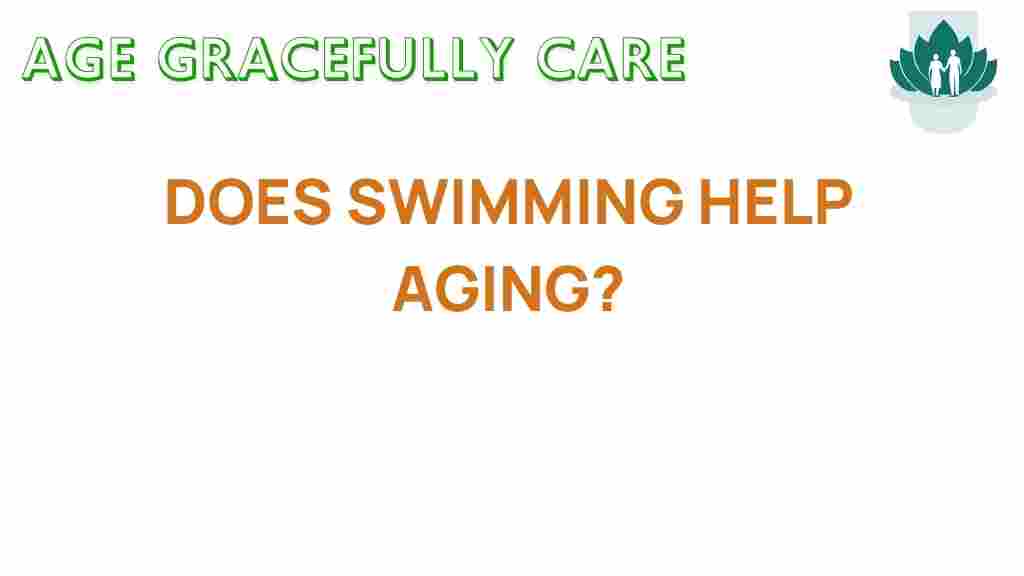The Surprising Benefits of Swimming for Aging Gracefully
As we age, maintaining our health and fitness becomes increasingly important. One of the most enjoyable and effective forms of exercise that promotes longevity and wellness is swimming. This low-impact physical activity offers a range of benefits that can help individuals age gracefully. In this article, we will explore the various ways swimming contributes to health, fitness, and overall well-being, particularly for older adults.
Why Swimming is Ideal for Aging Individuals
Swimming is a unique form of exercise that combines cardiovascular fitness, strength training, and flexibility, making it an ideal choice for those looking to improve their health as they age. Here are some reasons why swimming stands out:
- Low Impact: Swimming is gentle on the joints, making it suitable for individuals with arthritis or other joint issues.
- Full-Body Workout: It engages multiple muscle groups, enhancing strength and endurance.
- Cardiovascular Health: Swimming improves heart health and circulation, reducing the risk of heart-related illnesses.
- Stress Relief: The soothing nature of water can help reduce stress and promote mental well-being.
The Health Benefits of Swimming
Incorporating swimming into your routine can lead to significant health improvements. Here are some key benefits:
- Improved Cardiovascular Fitness: Regular swimming strengthens the heart and lungs, which is crucial for overall longevity.
- Enhanced Muscle Strength: The resistance of water provides an excellent workout for muscles, helping to maintain strength as we age.
- Weight Management: Swimming burns calories, aiding in weight control, which is vital for reducing the risk of chronic diseases.
- Increased Flexibility: Swimming encourages a full range of motion, keeping joints flexible and reducing stiffness.
How to Get Started with Swimming for Fitness
If you’re new to swimming or returning after a hiatus, here’s a step-by-step guide to help you get started:
1. Choose the Right Environment
Select a pool that is comfortable and safe. Look for facilities that offer shallow ends, warm water, and accessible entry points.
2. Invest in Proper Gear
Having the right swimwear and accessories can enhance your experience:
- Swimsuit: Choose a well-fitting swimsuit that allows for ease of movement.
- Goggles: Protect your eyes and improve visibility underwater.
- Swim Cap: Keeps hair out of your face and reduces drag.
3. Start with Basic Techniques
Focus on mastering basic strokes such as freestyle and backstroke. Consider taking lessons from a qualified instructor if you’re unsure about your technique.
4. Develop a Routine
Consistency is key. Aim for at least 2-3 swimming sessions per week, gradually increasing the duration and intensity of your workouts.
5. Mix It Up
Incorporate different strokes and techniques to keep your workouts interesting and to engage various muscle groups.
Incorporating Aquatic Therapy
Aquatic therapy is a specialized form of rehabilitation and exercise that takes place in water. It can be particularly beneficial for older adults. Here’s how:
- Rehabilitation: Water provides resistance while reducing the impact on joints, making it ideal for recovery from injuries.
- Balance and Coordination: Aquatic therapy can help improve stability and coordination, reducing the risk of falls.
- Enhanced Relaxation: The buoyancy of water can promote relaxation and reduce muscle tension, contributing to overall wellness.
Common Challenges and Troubleshooting Tips
While swimming is an excellent form of exercise, some individuals may face challenges. Here are common issues and how to overcome them:
1. Fear of Water
Fear of water is common, especially for those who didn’t learn to swim as children. To overcome this:
- Consider taking private lessons with a certified instructor.
- Practice in shallow water to build confidence.
2. Physical Limitations
Some may have physical limitations that make swimming difficult. To address this:
- Consult with a physician or physical therapist to develop a safe swimming plan.
- Try using flotation devices to assist with buoyancy and movement.
3. Maintaining Motivation
Staying motivated can be challenging. Here are tips to keep you engaged:
- Set specific fitness goals and track your progress.
- Join a swimming group or class to build a sense of community.
- Mix swimming with other forms of exercise for variety.
Conclusion
Swimming is not just a fun activity; it is a powerful tool for aging gracefully. With its myriad benefits for health, fitness, and wellness, swimming can significantly enhance your quality of life as you age. Whether you are looking to improve cardiovascular health, maintain muscle strength, or simply enjoy the therapeutic effects of water, swimming is an excellent choice. Consider making it a regular part of your fitness routine, and embrace the journey to a healthier, longer life.
For more information on aquatic therapy and its benefits, check out this relevant article.
Ready to dive into a healthier lifestyle? Start swimming today and experience the incredible benefits for yourself!
This article is in the category Health and created by AgeGracefullyCare Team
